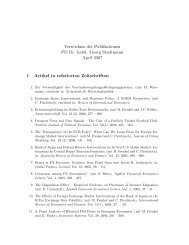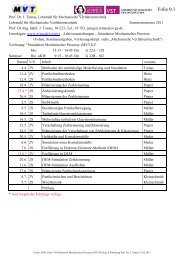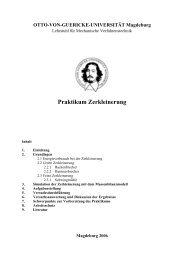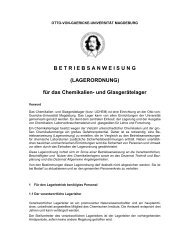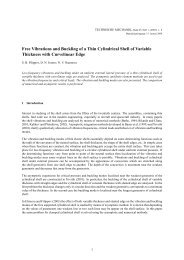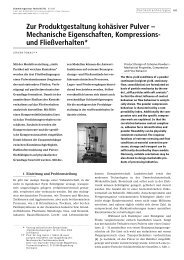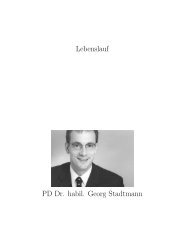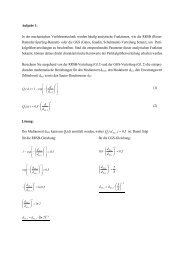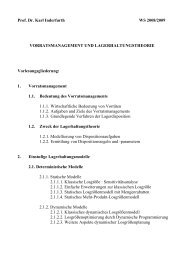Mechanics of nanoparticle adhesion â A continuum approach
Mechanics of nanoparticle adhesion â A continuum approach
Mechanics of nanoparticle adhesion â A continuum approach
Create successful ePaper yourself
Turn your PDF publications into a flip-book with our unique Google optimized e-Paper software.
dentation t < / ( ⋅p)<strong>Mechanics</strong> <strong>of</strong> <strong>nanoparticle</strong> <strong>adhesion</strong> — A <strong>continuum</strong> <strong>approach</strong> 31η κ , e.g., t < 5 d for the titania used as a very cohesiveKfpowder (specific surface area A S,m = 12 m 2 /g, with a certain water adsorption capacity).All the material parameters are collected in Table 2.A viscoelastic relaxation in the particle contact may be added as a timedependentfunction <strong>of</strong> the average modulus <strong>of</strong> elasticity E * , Yang [61] and Krupp[49] (t relax is the characteristic relaxation time):1 = 1 + 1 − 1 ⋅exp−* * * *E E ( ) ( 0) ∞t →∞ E0t = E∞( tt )The slopes <strong>of</strong> the elastic–plastic, viscoelastic–viscoplastic yield and <strong>adhesion</strong>boundaries as well as the unloading and reloading curves, which include a certainrelaxation effect, are influenced by the increasing s<strong>of</strong>tness or compliance <strong>of</strong> thespherical particle contact with loading time (Fig. 6). This model system includesall the essential constitutive functions <strong>of</strong> the authors named before [41, 55, 57, 60,61]. A survey <strong>of</strong> the essential contact force-displacement models is given in Fig. 7and Table 1.Obviously, contact deformation and <strong>adhesion</strong> forces are stochastically distributedmaterial functions. Usually one may focus here only on the characteristic oraveraged values <strong>of</strong> these constitutive functions.2.3.4. Adhesion force modelStarting with all these force-displacement functions one turns to an <strong>adhesion</strong> andnormal force correlation to find out the physical basis <strong>of</strong> strength-stress relationsin <strong>continuum</strong> mechanics [13, 14, 122, 149]. Replacing the contact area in Eq.(38), the following force–force relation is directly obtained:relaxp F + FVdW H0 NFH = FH0 + pVdW⋅ AK = FH0+ ⋅p2 1A pAf pl VdW+ ⋅ −3 3 AKpfp(69)(70)Therefore, with a so-called elastic–plastic contact consolidation coefficient κ,κpκ =(71)κ −κa linear model for the <strong>adhesion</strong> force F H as function <strong>of</strong> normal force F N is obtained(Fig. 8):F κF κF F F( 1 κ )ApH= ⋅H0+ ⋅N= + ⋅H0+ κ ⋅κ NA−κp κA −κp(72)The dimensionless strain characteristic κ is given by the slope <strong>of</strong> <strong>adhesion</strong>force F H which is influenced by predominant plastic contact failure. It is a meas-



